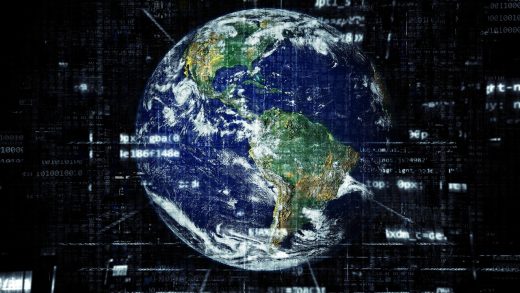In a world where natural disasters can strike without warning, the integration of artificial intelligence (AI) into disaster response and management is nothing short of revolutionary. Imagine a scenario where emergency responders have the ability to predict disasters before they happen, allocate resources efficiently, and communicate effectively with affected communities—all thanks to AI. This technology is not just a futuristic concept; it is actively transforming the way we prepare for and respond to crises.
AI is enhancing the efficiency of disaster management strategies by utilizing a variety of innovative technologies. For instance, machine learning algorithms can process vast amounts of data to identify patterns and trends, allowing organizations to make informed decisions in real time. This capability is crucial during emergencies when every second counts. Furthermore, AI-powered tools can analyze social media and news feeds to gauge public sentiment, which helps authorities understand the ground situation better.
One of the most significant advantages of AI in disaster management is its ability to integrate real-time data from multiple sources. This means that emergency responders can have a comprehensive view of the situation, which is vital for effective coordination. Imagine a bustling control room where data from sensors, drones, and even social media feeds are displayed in real time, providing a clear picture of the unfolding disaster. Such integration not only improves response times but also enhances the overall effectiveness of disaster management efforts.
As we delve deeper into the impact of AI on disaster response, it becomes evident that this technology is not just about speed; it’s about saving lives. Automated decision-making systems streamline operations, allowing for quicker responses that can mean the difference between life and death. In search and rescue operations, for example, AI technologies, including drones and robots, are being employed to locate victims in hard-to-reach areas, significantly improving the chances of successful rescues.
In conclusion, the role of AI in disaster response and management is profound and multifaceted. As technology continues to advance, we can only anticipate even more innovative solutions that will enhance our preparedness and resilience in the face of disasters.
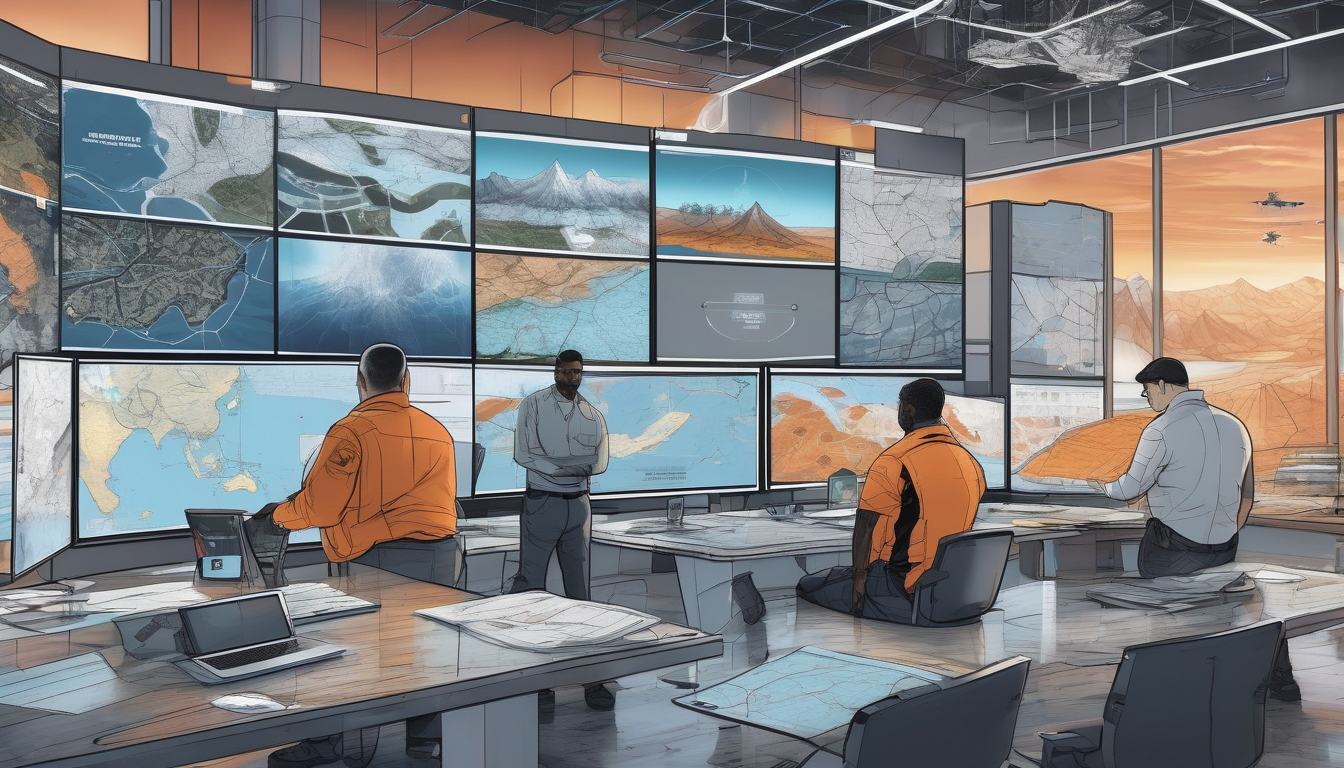
AI Technologies in Disaster Management
Artificial Intelligence (AI) is revolutionizing the way we approach disaster management, making it more efficient and effective than ever before. With the help of various AI technologies, organizations can respond to emergencies with precision and speed. These technologies include machine learning, data analytics, and natural language processing, each playing a crucial role in enhancing disaster preparedness and response.
Machine learning algorithms are particularly powerful, as they can analyze vast amounts of data to identify patterns and predict potential disasters. By examining historical data, weather patterns, and even social trends, these algorithms provide actionable insights that can be used by emergency services to enhance their strategies. Imagine having a crystal ball that helps you foresee disasters before they strike—this is what machine learning brings to the table.
Moreover, natural language processing (NLP) tools are game-changers in gauging public sentiment during emergencies. By analyzing social media posts and news articles, NLP can identify emerging disaster situations, allowing authorities to respond promptly. This technology acts like a radar, picking up on signals that humans might overlook, thus ensuring timely interventions.
Another exciting aspect is the use of image recognition technologies. These tools can assess damage through satellite imagery or drone footage, providing rapid damage assessments that prioritize response efforts effectively. For instance, after a hurricane, drones can fly over affected areas and deliver real-time images to aid in decision-making, ensuring that resources are allocated where they are needed most.
All of these technologies rely on real-time data integration. By gathering information from various sources—such as sensors, social media, and weather forecasts—emergency responders gain a comprehensive understanding of the situation. This holistic view not only improves coordination among different agencies but also enhances overall effectiveness during disasters.
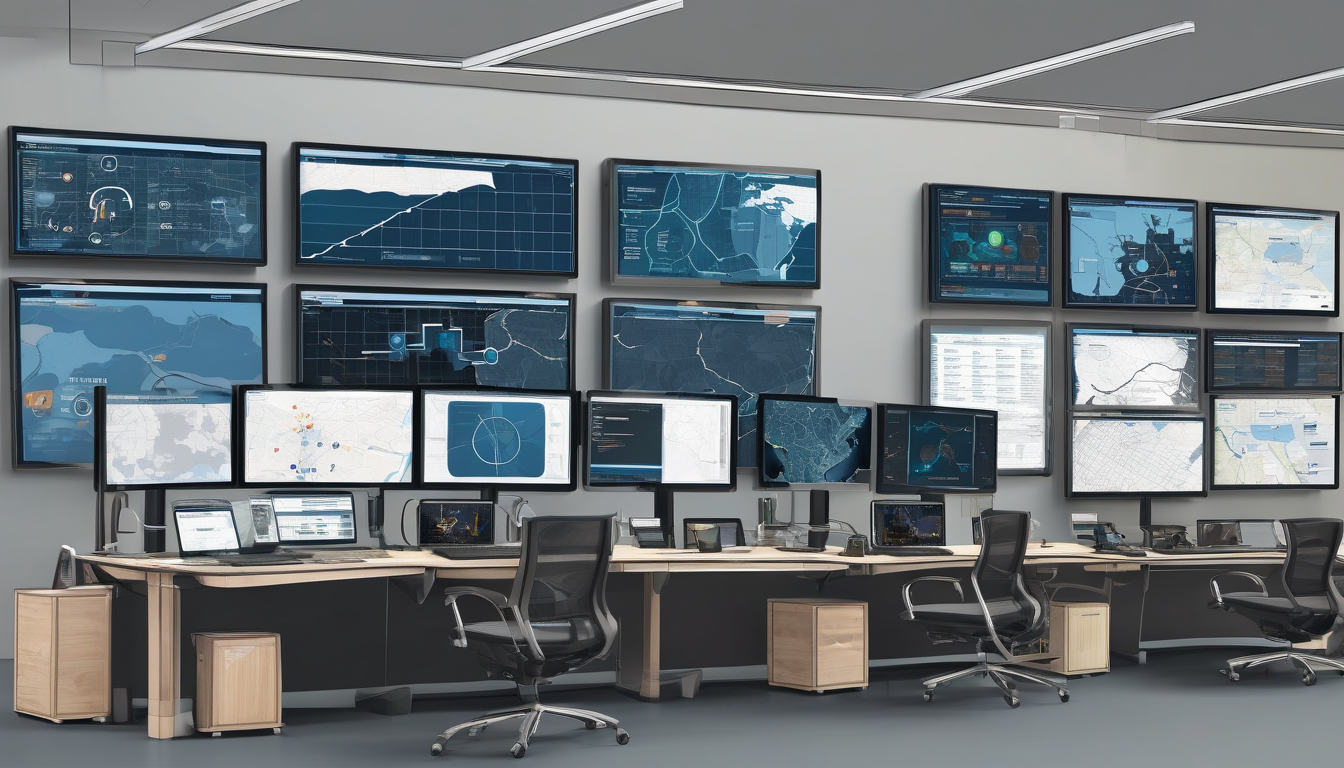
Predictive Analytics for Disaster Preparedness
Predictive analytics is like having a crystal ball for disaster preparedness. By analyzing historical data, weather patterns, and social factors, organizations can forecast potential disasters before they strike. This proactive approach allows for effective preparation and risk mitigation, saving countless lives and resources. Imagine being able to predict a hurricane’s path or an earthquake’s likelihood—this is the power that predictive analytics brings to the table.
One of the key components of predictive analytics is its ability to sift through vast amounts of data to identify trends. For instance, machine learning algorithms can analyze past disaster events and correlate them with current conditions. This means that emergency services can be better equipped to handle crises when they arise. The integration of data from various sources, such as weather satellites, social media feeds, and geological sensors, enhances the accuracy of these predictions, providing a comprehensive understanding of potential risks.
Moreover, predictive analytics doesn’t just stop at forecasting; it also plays a crucial role in resource allocation. By knowing where and when a disaster is likely to occur, organizations can strategically position resources and personnel. This can be the difference between life and death in critical situations. For example, if a flood is predicted in a certain area, emergency responders can pre-deploy boats and medical teams, ensuring they are ready to act as soon as the crisis hits.
In conclusion, the impact of predictive analytics on disaster preparedness cannot be overstated. It not only enhances our ability to foresee potential threats but also equips us with the tools to respond effectively. As technology continues to advance, we can expect even more sophisticated predictive models that will further improve our readiness for disasters. The future is bright, and with the right analytics in place, we can build more resilient communities capable of withstanding the unexpected.
Machine Learning Algorithms
are at the forefront of revolutionizing disaster response strategies. By analyzing vast datasets, these algorithms can identify patterns and trends that might otherwise go unnoticed. Imagine having the ability to predict a storm’s trajectory or the likelihood of an earthquake based on historical data and environmental factors. This capability is not just a dream; it’s becoming a reality thanks to advancements in AI technology.
The magic of machine learning lies in its ability to learn from data continuously. For instance, as more data becomes available from previous disasters, algorithms refine their predictions, becoming increasingly accurate over time. This is akin to a seasoned detective piecing together clues to solve a case. The more evidence they gather, the clearer the picture becomes. Similarly, machine learning helps emergency services prepare for potential disasters by providing actionable insights.
One of the most significant advantages of machine learning in disaster management is its ability to enhance preparedness and response strategies. By processing real-time data from various sources, these algorithms can generate alerts and recommendations for emergency responders. This means that when a natural disaster strikes, agencies can mobilize resources more effectively, ultimately saving lives and minimizing damage.
Furthermore, machine learning algorithms can also assist in optimizing resource allocation during crises. For example, they can analyze the needs of affected areas and prioritize where to send aid first. This is crucial in situations where every second counts. The integration of machine learning into disaster response is not just about speed; it’s about making informed decisions that can have a profound impact on the outcome of emergency situations.
In conclusion, the role of machine learning algorithms in disaster management is transformative. As technology continues to evolve, so too will our ability to respond to disasters more efficiently and effectively. The future is bright, and with these powerful tools at our disposal, we can build a more resilient world.
Natural Language Processing Applications
Natural Language Processing (NLP) has emerged as a game-changer in the realm of disaster response, acting like a digital detective that sifts through mountains of data to uncover critical insights. Imagine being able to listen to the collective voice of the public during a crisis—NLP makes this possible by analyzing social media posts, news articles, and even emergency calls. This capability allows authorities to gauge public sentiment and identify emerging disaster situations in real-time, leading to faster and more informed responses.
One of the standout features of NLP is its ability to process and interpret human language in a way that machines can understand. By employing advanced algorithms, NLP tools can detect keywords and phrases that signal distress or urgent needs. For instance, during a natural disaster, people might tweet phrases like “help needed” or “trapped in my house.” NLP can pick up on these signals quickly, alerting emergency services to prioritize these areas. This is crucial in ensuring that help reaches those who need it most, often before traditional communication channels can relay the same information.
Moreover, NLP can help streamline information dissemination. During a disaster, the flow of information can be overwhelming. By summarizing vast amounts of text data, NLP tools can provide concise updates to emergency responders and the public alike. This ensures that everyone stays informed without drowning in a sea of information. For example, NLP can generate real-time reports that highlight the most pressing issues, allowing agencies to allocate resources more effectively.
In summary, the applications of Natural Language Processing in disaster response are vast and impactful. By transforming raw data into actionable insights, NLP not only enhances situational awareness but also fosters a more coordinated and effective response to crises. The ability to listen to and understand the public’s voice during emergencies is invaluable, ultimately leading to **better outcomes** and **lives saved**.
Image Recognition Technologies
In the realm of disaster response, are proving to be game-changers. These advanced systems utilize sophisticated algorithms to analyze images captured by satellites, drones, and even ground-based cameras. By processing visual data, they can quickly assess damage in affected areas, which is crucial for effective resource allocation and response planning.
Imagine a scenario where a natural disaster strikes a densely populated region. The chaos can be overwhelming, but with image recognition technology, emergency responders can obtain a clear picture of the situation almost instantly. This technology can identify the extent of damage to buildings, roads, and infrastructure, allowing authorities to prioritize their response efforts efficiently.
One of the remarkable aspects of image recognition is its ability to function in real-time. As images are captured, they are analyzed using machine learning models that have been trained on vast datasets. This enables the system to recognize patterns and anomalies that might indicate significant damage or hazards. For instance, during a flood, the technology can differentiate between flooded areas and safe zones, helping rescue teams navigate effectively.
Furthermore, the integration of with other data sources enhances situational awareness. For example, when combined with geographic information systems (GIS), responders can visualize the data on maps, making it easier to strategize their actions. This synergy not only improves decision-making but also accelerates the overall response time.
However, it’s essential to acknowledge that while image recognition technologies offer incredible benefits, they are not without challenges. Issues such as data quality, algorithm accuracy, and the need for human oversight remain pertinent. As we move forward, addressing these challenges will be crucial to fully harnessing the potential of image recognition in disaster management.
Real-time Data Integration
In the chaotic moments of a disaster, having access to real-time data is like having a lifeline. Integrating data from various sources—such as sensors, social media, and satellite feeds—provides emergency responders with a comprehensive view of the situation. Imagine trying to solve a puzzle with only a few pieces; without complete information, the picture remains unclear. This is where real-time data integration shines, filling in the gaps and offering a clearer understanding of the unfolding crisis.
By harnessing data from multiple channels, responders can make informed decisions quickly. For instance, during a natural disaster, data from weather monitoring systems can be combined with information from social media posts to gauge public sentiment and assess the needs of affected communities. This integration not only improves coordination among agencies but also enhances the effectiveness of the response. For example, if social media indicates that a particular area is experiencing severe flooding, emergency services can prioritize their resources accordingly.
Moreover, the use of geospatial data plays a critical role in real-time integration. By analyzing geographic information, responders can identify high-risk areas and allocate resources where they are needed most. The combination of real-time data with advanced analytics allows for:
- Faster identification of disaster zones
- Improved resource allocation
- Enhanced situational awareness for decision-makers
However, integrating real-time data isn’t without its challenges. Data overload can lead to confusion, making it crucial for teams to have streamlined systems that filter out noise and focus on actionable insights. Ultimately, the goal is to ensure that every piece of information contributes to a more effective response, making the difference between life and death in critical situations.
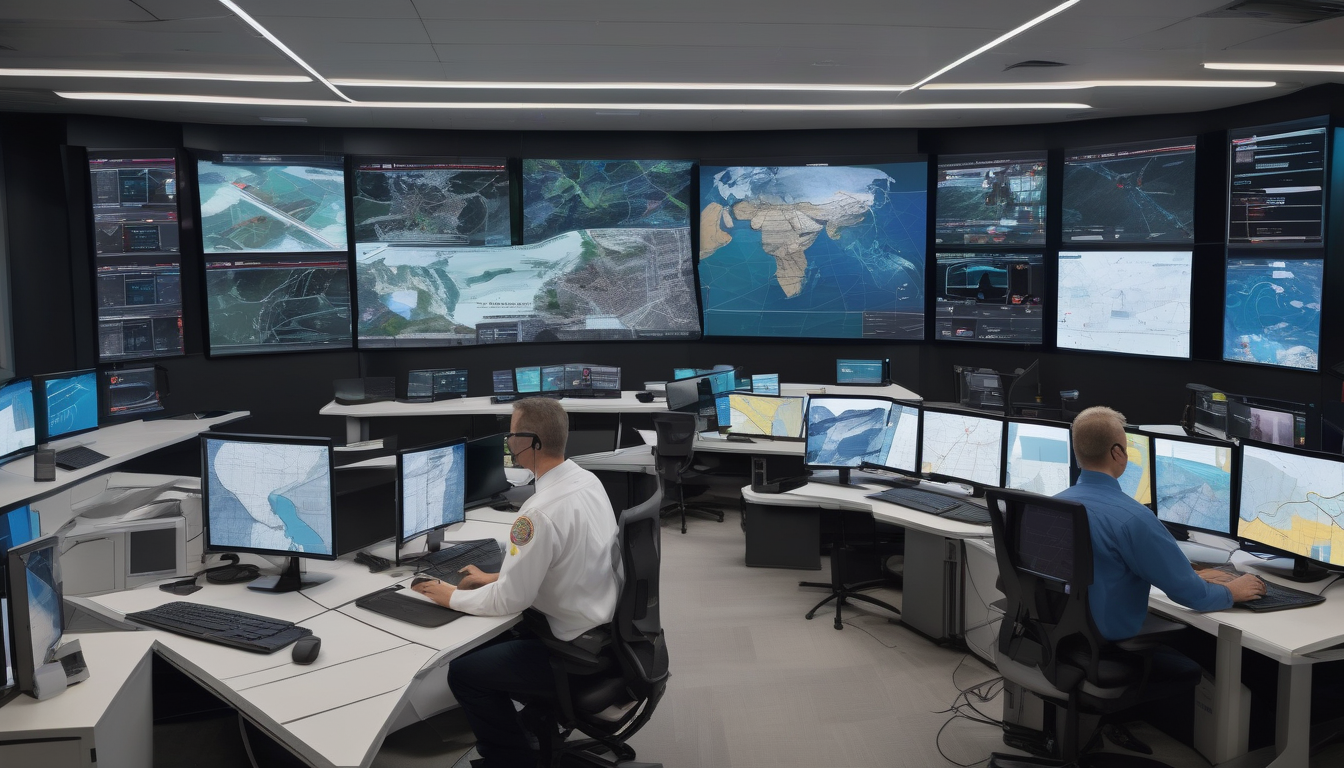
The Impact of AI on Response Time
In the chaotic moments following a disaster, every second counts. This is where artificial intelligence (AI) steps in as a game changer, significantly reducing response times and enhancing the effectiveness of emergency services. Imagine a world where rescue operations are not hindered by bureaucratic delays or outdated information—AI makes this a reality. By automating processes and optimizing resource allocation, AI ensures that help reaches those in need faster than ever before.
One of the most remarkable aspects of AI is its ability to facilitate faster communication between agencies and affected communities. During a disaster, information can become fragmented and overwhelming. However, AI systems can analyze vast amounts of data in real-time, providing crucial insights that guide decision-making. For instance, emergency responders can receive instant updates on the situation, allowing them to adapt their strategies swiftly. This capability is akin to having a highly efficient assistant who filters through noise to deliver only the most relevant information.
Automated decision-making systems are at the heart of this transformation. These systems streamline operations during crises, allowing for quicker responses to emergencies. For example, when a natural disaster strikes, AI can prioritize which areas require immediate assistance based on data analysis, ensuring that resources are allocated where they are needed most. This not only saves lives but also conserves valuable resources.
Furthermore, AI technologies play a pivotal role in enhancing search and rescue operations. Drones equipped with AI can navigate through debris and difficult terrains, locating victims in hard-to-reach areas. This technology is akin to having a pair of eyes in the sky, searching tirelessly for those in distress. The integration of AI in these operations not only improves the chances of successful rescues but also instills hope in affected communities.
In conclusion, the impact of AI on response time during disasters is profound. By automating critical processes, enhancing communication, and improving resource allocation, AI not only saves time but also saves lives. As we continue to embrace these technologies, the future of disaster response looks more efficient and effective than ever.
Automated Decision-Making Systems
In the chaotic moments following a disaster, every second counts. are like the unsung heroes in the background, working tirelessly to ensure that emergency responses are swift and effective. Imagine a well-oiled machine that can analyze data faster than any human could—this is precisely what these systems do. By leveraging advanced algorithms and real-time data, they can assess situations and recommend actions that might save lives and resources.
These systems operate on various inputs, from weather forecasts to social media updates, creating a comprehensive picture of the disaster landscape. For instance, when a natural disaster strikes, automated systems can:
- Analyze incoming data from sensors and satellites.
- Identify the most affected areas based on real-time information.
- Allocate resources efficiently, directing help where it’s needed most.
The beauty of automation lies in its ability to eliminate human error and bias. While human responders are invaluable, they can be overwhelmed by the sheer volume of information during a crisis. Automated systems can sift through this data, highlighting critical issues that require immediate attention. This not only streamlines operations but also enhances coordination among different agencies, allowing them to work in harmony rather than at cross purposes.
Moreover, these systems can continuously learn and adapt. The more they are used, the better they become at predicting outcomes and making informed decisions. This capability is crucial as it means that, over time, automated decision-making systems can improve their recommendations, leading to even more effective disaster response strategies.
In summary, automated decision-making systems are revolutionizing disaster management by providing timely, data-driven insights that can significantly reduce response times and improve overall efficiency. As we continue to face increasingly complex challenges in disaster scenarios, these systems will play a pivotal role in shaping the future of emergency response.
AI in Search and Rescue Operations
When disaster strikes, the clock is ticking, and every second counts. This is where artificial intelligence (AI) steps in, revolutionizing search and rescue operations like never before. Imagine a world where drones equipped with advanced AI can scour through debris in a matter of minutes, pinpointing the exact location of trapped individuals. This is not science fiction; it’s happening right now!
AI technologies are enhancing search and rescue efforts in several remarkable ways. For instance, drones can be deployed to cover vast areas quickly, providing real-time data and aerial views that human rescuers simply cannot achieve on foot. Equipped with sophisticated image recognition software, these drones can identify shapes and movements that indicate the presence of survivors, even in the most challenging environments.
Moreover, AI algorithms can analyze data from various sources, including satellite imagery and social media updates, to optimize search patterns. By processing this information, AI can suggest the most likely locations where victims may be found, allowing rescue teams to focus their efforts more effectively. This targeted approach not only saves time but also maximizes the chances of successful rescues.
One of the most exciting developments in this field is the use of robotic systems. These robots can navigate treacherous terrains that are unsafe for human rescuers. Imagine a small, agile robot crawling through rubble, equipped with sensors to detect heartbeats or voices. This technology can make a significant difference in locating survivors who might otherwise remain undiscovered.
However, while AI is a powerful ally in search and rescue operations, it is essential to remember that it works best in tandem with human expertise. The combination of AI technology and human intuition creates a robust response strategy, ensuring that technology enhances rather than replaces the invaluable skills and empathy of rescue workers.
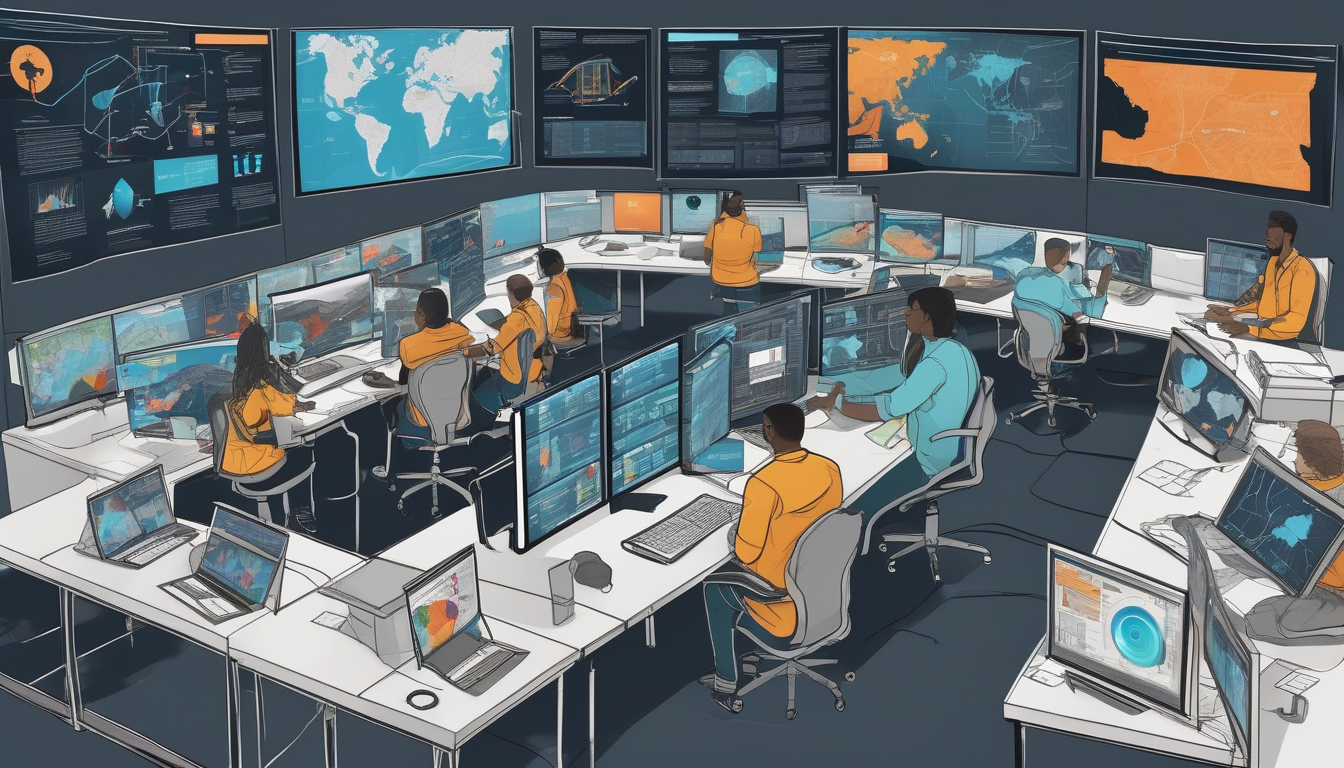
Challenges and Ethical Considerations
As we embrace the incredible potential of artificial intelligence in disaster response, we must also confront the significant challenges and ethical dilemmas that accompany its implementation. One of the most pressing concerns is data privacy. In an era where information is power, the collection and analysis of vast amounts of data can lead to sensitive personal information being exposed. This necessitates strict measures to safeguard data while still harnessing its power for effective disaster management.
Additionally, there’s the issue of algorithmic bias. AI systems are only as good as the data they are trained on. If the underlying data reflects societal biases, the AI’s decisions may inadvertently favor one group over another, potentially leaving marginalized communities at a disadvantage during crises. For instance, if an AI system is trained predominantly on data from urban areas, it may fail to accurately predict or respond to disasters in rural settings.
Moreover, the question of accountability arises. When AI systems make decisions during emergencies, who is responsible for those decisions? Is it the developers of the AI, the organizations using it, or the government agencies overseeing disaster response? This ambiguity can complicate the response efforts and erode public trust.
To address these challenges, it is essential for stakeholders to develop ethical guidelines that govern the use of AI in disaster management. These guidelines should focus on:
- Ensuring transparency in AI decision-making processes.
- Implementing robust data protection measures.
- Regularly auditing AI systems to mitigate bias.
- Fostering collaboration between technologists and ethicists.
In conclusion, while AI holds tremendous promise for enhancing disaster response, we must tread carefully. By addressing these challenges head-on, we can ensure that technology serves as a tool for good, ultimately saving lives and building more resilient communities.
Data Privacy and Security
In the rapidly evolving landscape of disaster response, the integration of AI technologies raises significant concerns regarding data privacy and security. As emergency services increasingly rely on data-driven insights to make critical decisions, the need to protect sensitive information becomes paramount. Imagine a scenario where the very data meant to save lives is compromised; this highlights the delicate balance between leveraging technology and safeguarding personal information.
AI systems often require access to vast amounts of data, including personal details, location information, and health records. This data, while essential for effective disaster management, poses risks if not handled properly. For instance, during a natural disaster, authorities might analyze social media posts to gauge public sentiment, but this could inadvertently expose individuals’ private thoughts and locations. Therefore, implementing robust data protection measures is crucial.
Organizations must establish stringent protocols to ensure that data is collected, stored, and processed securely. Here are some key considerations:
- Encryption: All sensitive data should be encrypted to prevent unauthorized access.
- Access Controls: Limit access to data based on roles and responsibilities to minimize exposure.
- Regular Audits: Conducting regular audits can help identify vulnerabilities in data handling practices.
Moreover, transparency is essential. Communities affected by disasters deserve to know how their data is being used and what measures are in place to protect it. Building trust through clear communication can enhance cooperation between the public and emergency services, ultimately leading to more effective responses.
As we move forward, the challenge will be to develop AI solutions that not only enhance disaster response but also prioritize ethical considerations surrounding data privacy. This will require collaboration between technologists, policymakers, and community leaders to create frameworks that ensure responsible use of AI in times of crisis.
Addressing Algorithmic Bias
In the realm of disaster response, algorithmic bias poses a significant challenge that can undermine the effectiveness of AI systems. This bias often arises from the data used to train these algorithms, which may not accurately represent all segments of the population. For instance, if an AI model is primarily trained on data from urban areas, it may struggle to effectively respond to disasters in rural communities, leading to inequitable outcomes.
To tackle this issue, it is crucial for organizations to implement strategies that ensure fairness and inclusivity in AI systems. One effective approach is to diversify the datasets used in training. By incorporating data from a wide range of demographics and geographic locations, AI systems can become more adept at recognizing the unique needs of various communities during disasters.
Moreover, continuous monitoring and evaluation of AI algorithms are essential. This involves regularly assessing the performance of AI systems to identify any biases that may have emerged over time. Organizations can establish a feedback loop where insights from real-world applications inform ongoing adjustments to the algorithms, ensuring they remain fair and effective.
Another important aspect is fostering collaboration between data scientists, ethicists, and community representatives. By bringing together diverse perspectives, organizations can better understand the potential impacts of their AI systems and work towards solutions that prioritize equity. This collaboration can take various forms, such as:
- Conducting community workshops to gather input on AI applications.
- Engaging with ethicists to develop guidelines that address algorithmic bias.
- Establishing partnerships with organizations that advocate for marginalized communities.
Ultimately, addressing algorithmic bias is not just about improving technology; it’s about ensuring that all communities receive the support they need during disasters. By prioritizing fairness and inclusivity, we can harness the full potential of AI in disaster response, making our systems more resilient and effective for everyone.
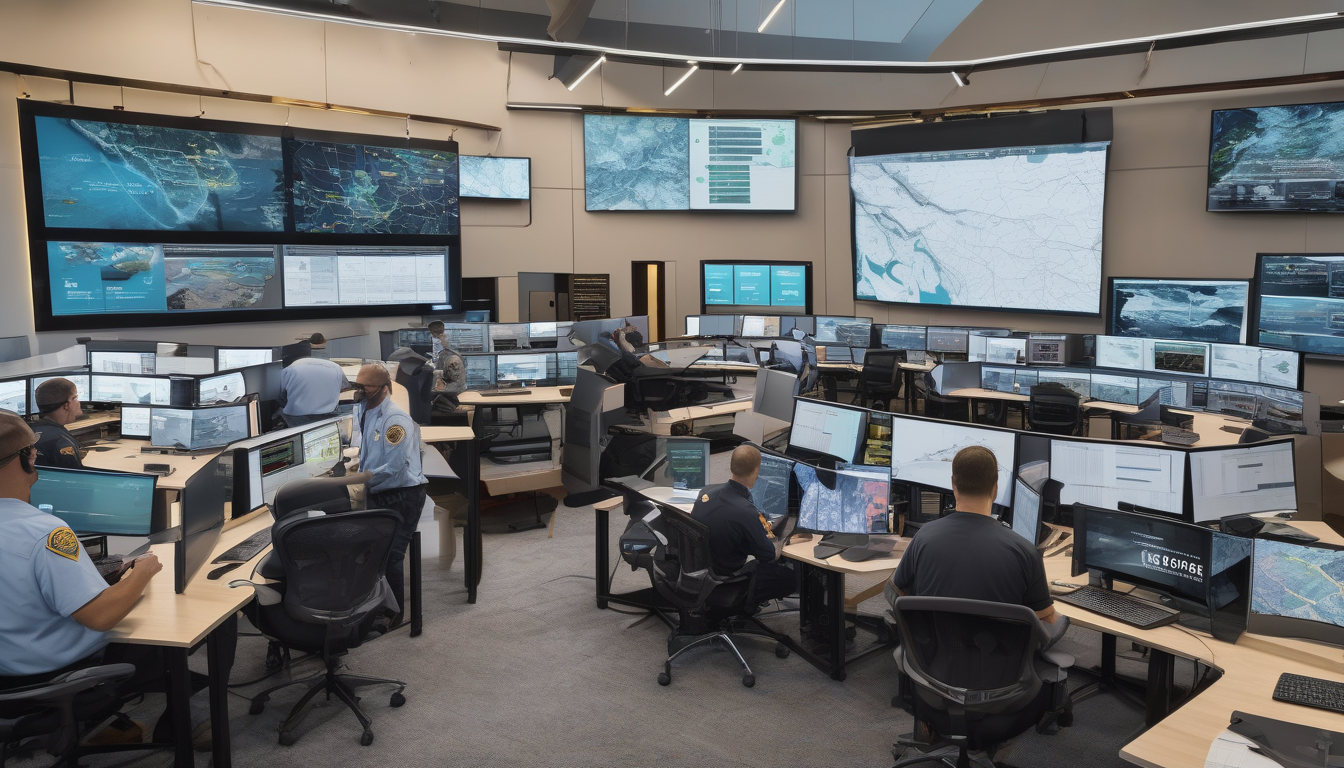
The Future of AI in Disaster Response
The future of AI in disaster response is not just bright; it’s positively dazzling! With the rapid advancements in technology, we are on the brink of a revolution that promises to enhance our ability to prepare for, respond to, and recover from disasters like never before. Imagine a world where predictive models can accurately forecast disasters days in advance, giving communities ample time to evacuate and prepare. This isn’t science fiction; it’s the potential reality we are heading towards.
Emerging technologies, such as advanced robotics and enhanced predictive analytics, are set to transform how we manage crises. For instance, robots equipped with AI can navigate dangerous environments to deliver supplies or assist in search and rescue operations. These machines can operate in conditions that are too risky for human responders, significantly increasing the chances of saving lives.
Moreover, the integration of real-time data from various sources, including social media, weather updates, and satellite imagery, will create a comprehensive situational awareness. This means emergency responders will have access to crucial information instantly, allowing for quicker decision-making. In fact, AI systems can analyze this data faster than any human team, identifying patterns and suggesting optimal responses in real-time.
However, it’s essential to remember that technology should not replace human judgment. The collaboration between AI and human efforts is vital. While AI can provide data-driven insights, the empathy and intuition of human responders remain irreplaceable. Together, they can create a more effective response strategy that combines the best of both worlds.
As we look ahead, the promise of AI in disaster response is immense. With ongoing research and development, we can expect to see innovative solutions that will not only enhance our capabilities but also foster more resilient communities. The future is indeed bright, and it’s time to embrace the change that AI brings to disaster management!
Innovative AI Solutions on the Horizon
As we look to the future, the landscape of disaster response is set to be transformed by innovative AI solutions that promise to enhance our ability to manage crises. Imagine a world where advanced robotics work alongside human responders, tirelessly navigating through rubble to locate survivors. This is not just a dream; it’s becoming a reality. With the integration of cutting-edge technologies, we are on the brink of a revolution in how we approach disaster management.
One of the most exciting developments is the emergence of autonomous drones. These flying machines can cover vast areas quickly, equipped with sophisticated sensors and imaging technology. They can assess damage, identify hazards, and even deliver supplies to those in need. Picture a drone soaring over a disaster-stricken area, providing real-time data to emergency teams, allowing them to make informed decisions faster than ever before.
Moreover, predictive modeling is advancing at an incredible pace. By analyzing data from various sources, such as weather patterns and social media trends, these models can anticipate disasters before they occur. This capability allows communities to prepare and respond proactively, potentially saving countless lives. The synergy between data analytics and machine learning means that our understanding of disaster risks is becoming increasingly sophisticated.
Additionally, the role of virtual reality (VR) in training responders is gaining traction. Imagine first responders donning VR headsets to simulate disaster scenarios, honing their skills in a safe environment before facing real-life challenges. This immersive training can significantly enhance their preparedness, ensuring they are ready to tackle any situation with confidence.
In summary, the horizon is bright with innovative AI solutions that will redefine disaster response. From autonomous drones to predictive modeling and VR training, these technologies are not just tools; they are lifelines. As we embrace these advancements, we pave the way for a future where communities are better equipped to face disasters head-on, ultimately leading to safer and more resilient societies.
Collaboration Between AI and Human Efforts
The intersection of artificial intelligence (AI) and human efforts is a game-changer in disaster response. Imagine a world where technology and human intuition work hand-in-hand to save lives. This collaboration is not just an ideal; it’s becoming a reality. While AI can process vast amounts of data and identify patterns at lightning speed, humans bring empathy, creativity, and critical thinking to the table. Together, they create a robust framework for tackling disasters more effectively.
For instance, during a natural disaster, AI can analyze real-time data from various sources like satellite imagery and social media, providing emergency responders with crucial insights. However, it’s the human responders who interpret this data, making judgment calls based on their experience and understanding of the community’s needs. This synergy ensures that the response is not only efficient but also compassionate.
Moreover, training and preparedness are areas where this collaboration shines. AI can help design simulation scenarios, allowing human teams to practice their responses in a controlled environment. This training enhances their decision-making skills under pressure, making them better equipped to handle real-life situations. As we look to the future, it’s clear that the most successful disaster management strategies will leverage both AI technologies and human expertise. After all, technology can provide the tools, but it’s the human spirit that drives the mission.
In conclusion, the collaboration between AI and human efforts is essential for optimizing disaster response. It ensures that while we harness the power of technology, we never lose sight of the human element that is so vital in crisis situations. This partnership is not just about efficiency; it’s about creating a more resilient and empathetic approach to disaster management.
Frequently Asked Questions
- How does AI improve disaster response?
AI enhances disaster response by automating processes, analyzing vast amounts of data, and providing real-time insights. This allows emergency responders to make quicker decisions and allocate resources more effectively, ultimately saving lives.
- What role does predictive analytics play in disaster preparedness?
Predictive analytics helps organizations forecast potential disasters by examining historical data and patterns. This foresight enables them to prepare in advance, mitigating risks before they escalate into full-blown emergencies.
- Can AI assist in search and rescue operations?
Absolutely! AI technologies, such as drones and robots, can be deployed in hard-to-reach areas to locate victims. This innovative approach significantly improves the chances of successful rescues, especially in challenging environments.
- What are the ethical concerns surrounding AI in disaster management?
While AI offers many benefits, concerns such as data privacy, algorithmic bias, and the need for ethical guidelines are critical. It’s essential to ensure that AI systems are used responsibly and do not disproportionately impact marginalized communities.
- What does the future hold for AI in disaster response?
The future looks bright! With advancements in AI technology, we can expect more innovative solutions that enhance preparedness and recovery efforts, leading to more resilient communities in the face of disasters.


